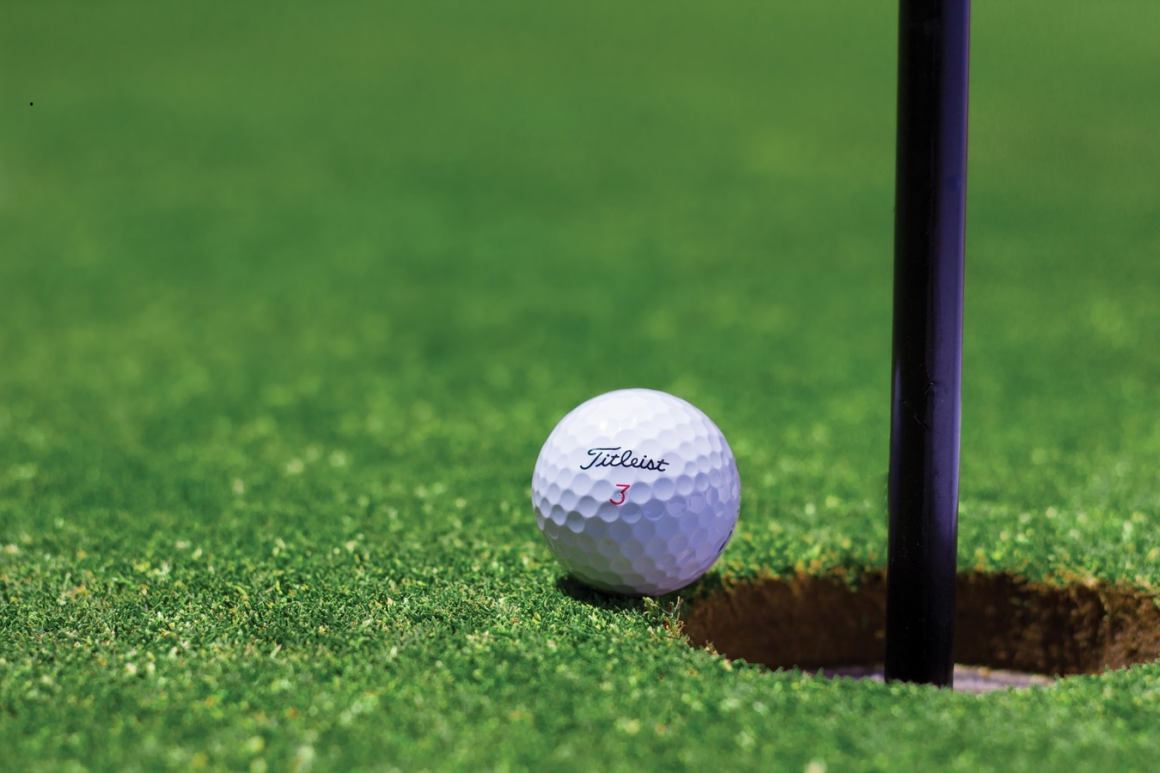A popular job for college students during the summer is to work with the maintenance crew at a golf course. A very physical job which of course includes a lot of mowing. The primary mowing is done with a hand mower. The tee boxes and the greens are mowed this way. The greens specifically are mowed every single morning starting around six AM. It is a tedious and precise process but if done correctly can yield beautiful results for those playing that day. This is a seven step process to aid in the green mowing process.
1. Choosing where to park the trailer and cart- The specialized hand mowers are transported in a trailer hitched to a maintenance cart. Choosing where to park is a critical first step so you can properly unload the mower and be able to easily load the mower back onto the trailer when done. One must also keep in mind not to block any pathways and try to avoid parking on grass that looks to be worn down due to constant traffic.
2. Unloading the mower and preparing to cut- One must make sure to delicately unload the mower and not damage the blades. These mowers cost over ten thousand dollars according to my golf course superintendent. Damaging the blades would be a highly costly mistake. There are detachable wheels that you must remove from the mower. Their only purpose is so one can transport the mower. I’ve seen people try to mow with them still on and they don’t exactly get anywhere. Let alone all the flack you’ll get from fellow workers. Once the mower is unloaded and the wheels are removed one can start the mower. It involves turning a switch near the mower to ON and pulling the starter cord. One must then turn on the blades and the roller drum that the mower moves on.
This is done by turning two separate levers located near the base of the mower. The mowers have a clutch system on them in which you must keep a handle depressed in order for the mower to move. This handle also has a safety lever. You must push forward the safety lever and feel the handle easily come back engaging the mower. Once the mower is engaged you can move into position. One must keep in mind that the mower blades must be kept off the grass by pushing down on the handle so as to elevate the blades off the grass avoiding cutting something that should not be cut. A good tip is to avoid turning on the blades until you are in position to cut but everybody has their own preference.
3. Choosing a pattern- Golf greens are mowed front to back, side to side, left to right and right to left. The left to right and right to left cuts are angle cuts. Envision a square in which you start at the bottom right corner and move to the top left corner. That is known as a right to left and cut and vice versa for a left to right handed cut. Often the superintendent will tell everyone what the direction is for that morning. It is always the opposite of the previous cut. If yesterday the greens were mowed side to side, then the next day they will be mowed front to back.
4. Finalizing position of cut- Once the direction of cut is chosen, one can properly place themselves to start cutting. The best way that I have found to start cutting is to either start at the edge of the green or the corner depending on the cut. For instance if a front to back cut is necessary then starting at the edge of the green and creating a straight line is the easiest way to go. If doing an angle cut then starting at a corner of a green and working across is typically the best bet. Every golf course is different in determining what the direction of cut actually is. At my golf course we are instructed to find the 150 yard pole and create a straight line from the pole to the green. With this straight line set up then all the cuts and can be based off that imaginary line.
5. The actually mowing itself- With the position of cut determined the mowing can begin. The first line is critical to get right as all the other lines will be based off the first. It is a back and forth process that ultimately comes down to effectively turning the mower. This can be done in a variety of ways. Most people choose to hold onto the mower with one hand and let the mower pivot around them, thus turning the mower around for then next line of cut. I choose to keep two hands on the mower which is a slower process but I am more comfortable with. It is all preference but the key is to keep the clutch engaged and mower moving. If one were to let go of the clutch then the mower comes to a halt and that’s not fun as one will most likely walk right into the mower.
Cutting of straight lines is not an easy task. It requires focus the whole way through. Some people choose to look ahead as if they were driving and pick a point ahead of them which they focus on while walking completely straight. Another method is to look at the previous line mowed and focus the edge of the mower on that line while keeping a slight over lap. Overlapping is another key of getting a great cut. If you miss a sliver of grass between the cuts it sticks out like a sore thumb and you have to go back and re-cut that line. Overlapping and walking straight with the mower are two of the biggest things to keep in mind while mowing.
6. Checking for grass build up in the bucket- There is a bucket attached to the front of the mower which catches the cut grass. It is critical to keep an eye on this bucket while mowing. Often one will have to stop at least once while mowing a green to empty this bucket. If it becomes too full then it will starting pouring grass into the blades which dulls them down. Maintaining a sharp blade is key to getting such a close cut that mowing a green requires.
7. The clean up pass- The last step in mowing a green is to do a clean up pass once one has completed all the back and forth passes possible. The clean up pass requires following the edge of the collar around the green with the mower. The collar is the strip of grass generally around two feet in width that boarders the green. It is key to keep an eye on the edge of your mower and make sure not to cut into the collar itself resulting in unsightly grass areas. Two clean up passes must be done.
The first following the edge of the collar then a second in which you follow the outside edge of your first cut but in the opposite direction that you made the first cut. For instance if one were to make the initial cut in a clockwise fashion then the second cut must be down in a counter-clockwise fashion. The clean up cuts get any grass that was missed on the edges due to having to pick up the mower early so as not to cut into the collar and to be able to properly turn the mower for the next pass. It is the finishing step in mowing a green. Once this step is complete you can step back and enjoy your handy work!
Mowing a golf course green may look easy but in fact involves many steps, in which none can be forgotten about. It is rewarding when completed as you can admire your straight lines for the rest of the day. It is also a great form of exercise. At my golf course we walk an average of 5 miles every morning in mowing alone!

